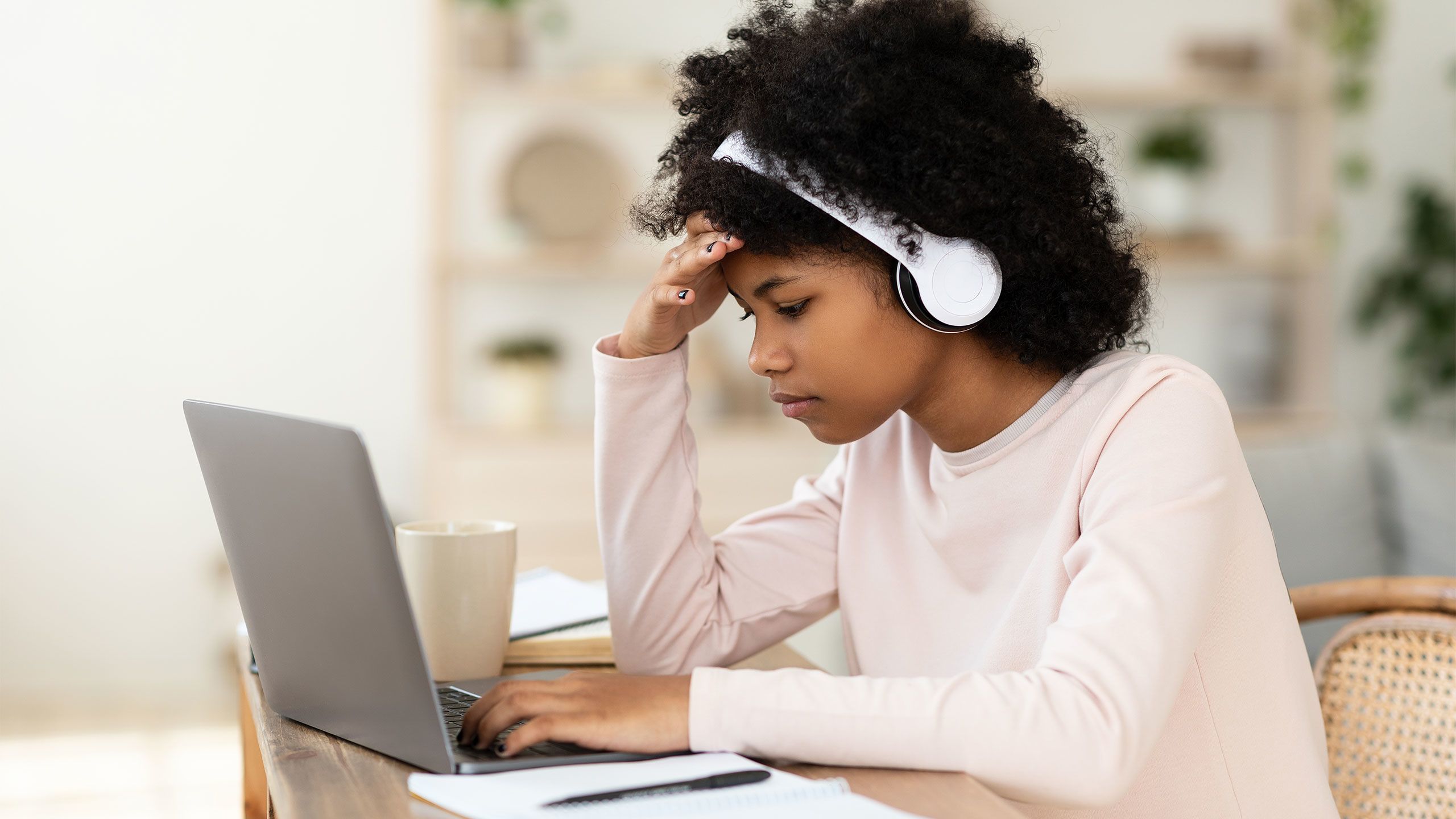Children Left Behind
Rutgers–Camden researcher explains how pandemic worsened racial achievement gap

When it comes to the pandemic’s impact on academic achievement, no children are immune. But just as COVID-19 itself has hit underserved demographics the hardest, minority students in poorly equipped schools experienced the steepest slides in the national test-score decline.
According to a new federal study, math and reading scores fell across the board for the nation’s 9-year-olds during the first two years of the pandemic. However, explained Rutgers University–Camden Assistant Professor Valerie Adams-Bass, a researcher for the Department of Childhood Studies in the Camden College of Arts and Sciences, students of color face systemic disadvantages that exacerbate an already dire situation.
“The pandemic was supposed to be the ‘great equalizer’ for students, but it actually widened the racial achievement gap,” Adams-Bass said. “Many schools were not properly equipped with one-to-one take-home technology. This meant the pivot to virtual learning was markedly slower for these schools.”
Adams-Bass explained that at the height of the pandemic, many students of color and their families were left to their own devices—or, more accurately, the lack thereof.
“Many families did not have home internet or had limited-tiered plans with slower speeds than needed for virtual learning,” Adams-Bass said. “Some children did not even have laptops or personal computers at home. Nonetheless, some teachers penalized students for not ‘showing up’ online.”
To compound matters further, Adams-Bass said, children whose parents were essential workers often did not have adults present to supervise online learning or troubleshoot internet connections. Moreover, essential workers and their families were more likely to contract COVID-19.
“For many children, the trauma associated with loss of family members or having to worry about family members was distracting,” Adams-Bass said. “Even since schools reopened, administrators have been ill-equipped to address the trauma or the socioemotional needs of these children, which may continue to impact learning.”
On the plus side, Adams-Bass noted, some Black students actually fared better learning at home, where there was no need to navigate racial biases often experienced in schools. “Students and parents were able to focus more on academics,” she said. “They weren’t stressed by their interactions with teachers at school.”
Going forward, Adams-Bass recommends that policymakers invest more in school infrastructure and remote learning resources to ensure that children in under-resourced communities have access to electronic devices, high-speed internet, and other essential learning supports. Moreover, school districts should fund enhanced instruction responsive to students′ individual academic needs. “This includes funding regular formative assessment of youth’s academic progress during and after the pandemic to ensure positive outcomes,” she said.
Adams-Bass posits that further research should be conducted into the inequitable structural conditions that allowed the COVID-19 pandemic to disproportionately affect students of color. identifying not only risks and vulnerabilities for these students but also assets and protective factors.
“Pre-pandemic conversations about tiered internet and open access were primarily among businesses, but that has changed,” Adams-Bass said. “If any good came out of the pandemic, it has been the increased awareness of the structural inequities that have widened the racial achievement gap over the past two years.”

Valerie Adams-Bass, assistant professor for the Department of Childhood Studies
Valerie Adams-Bass, assistant professor for the Department of Childhood Studies

Creative Design: Douglas Shelton